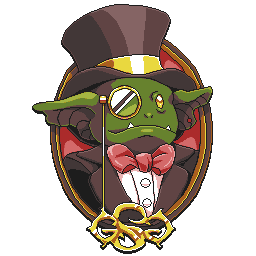With docs, books, dvds, pdfs, old campaign, and character notes in hand you gather your thoughts. You have all that you need to actually begin overhauling this published adventure or campaign proper. You’ve only begun to set to work when you realize that you don’t know where to begin your overhaul. There is no wrong way to go about the process from here, but I would suggest working from big concepts and working your way down to more granular aspects. Starting with tone.
DEFINING TONE
When I’m talking of tone here, I mean it similarly to how you would think of it in terms of movies. It’s the the general tone of the adventure or campaign you are overhauling, and not the session-to-session or moment-to-moment “tone” (or mood, as the film critics might call it). Those will change as you run the game and are subject to what everyone is bringing to the table on a given day.
The overarching tone is going to determine how the campaign feels overall and will be key in providing a touchstone for the next steps of the process. That’s the reason why I’m starting here: because I believe that good campaign design utilizes a consistent tone across its breadth. That’s not to say that tone changes can’t be used or should be avoided, but if you know what the overall tone is then you can weave in appropriate foreshadowing or keep yourself from giving anything away for that intentional whiplash effect when you drop that sick plot twist in the third act.
CHANGING THE TONE
The first decision you’ll want to make regarding the tone is whether you want to keep the tone the original writer intended or not. Often times you will use the pre-packaged tone, likely because that’s part of what drew you to the campaign or adventure in the first place.
On the other hand, you may find at this point in the process that your particular group might bounce off or actively work against the published tone. In those cases, it’s a good idea to notify your group of the tone ahead of time. Alternatively, you could always change the tone to something more amenable to your table. For example, if your table generally likes to be MST3000 with regards to horror content, it might be a good idea to change the tone of the Curse of Strahd adventure from a gothic horror tone to camp horror (camp as in Time Curry, not Jason Voorhees; unless maybe yes Jason, I’m not your dad).
f you’re changing the tone to something else, how divergent the tone is you’re using from the published one will determine how much extra work you’ll have to put in with the content edits. For example, referring back to the Curse of Strahd example, going from Gothic to Camp horror might not need much content editing by itself outside of DM presentation, but changing to comedy horror will need more work put in due to some of the deeply not-funny aspects of the story.
CHOOSING A NEW TONE
For specific ideas of tone, you’ll be best served by looking at your notes and sources of inspiration. But, if you need something to work off of, I personally think of things first in broad categories of Comedy and Tragedy in the Shakespearean sense. To oversimplify, Comedy means happy ending and tragedy means sad ending (though not necessarily resulting in death). Curse of Strahd can be viewed as intended to be a tragedy whereas most other adventures would fall under comedy.
After that, I think of the types of moods I want to evoke for most sessions and find a tone that will best support that. For my own overhaul of Storm Kings Thunder I wanted to give the players feelings of power as they fought giants, so I opted for an Action Anime tone. If I were working with an adventure that was more of a tragedy like Curse of Strahd, I’d probably go for two tones with one fading into the other, starting with gothic or other more grounded horror and slowly slide everything into cosmic horror (because that’s my jam).
How you use tone in your game is beyond the scope here, but hopefully I’ve given enough here to get you started: Decide if you want to change the tone (keeping in mind the workload that will be required), decide on a high-level tone (ex. comedy/tragedy), and then pick a few more specific tones based off your inspirations to shift between.
Next time, we’ll go into high-level story edits and how to make the call when something should be considered high-level or not.
Stay safe.
Have fun.
Your story matters.

